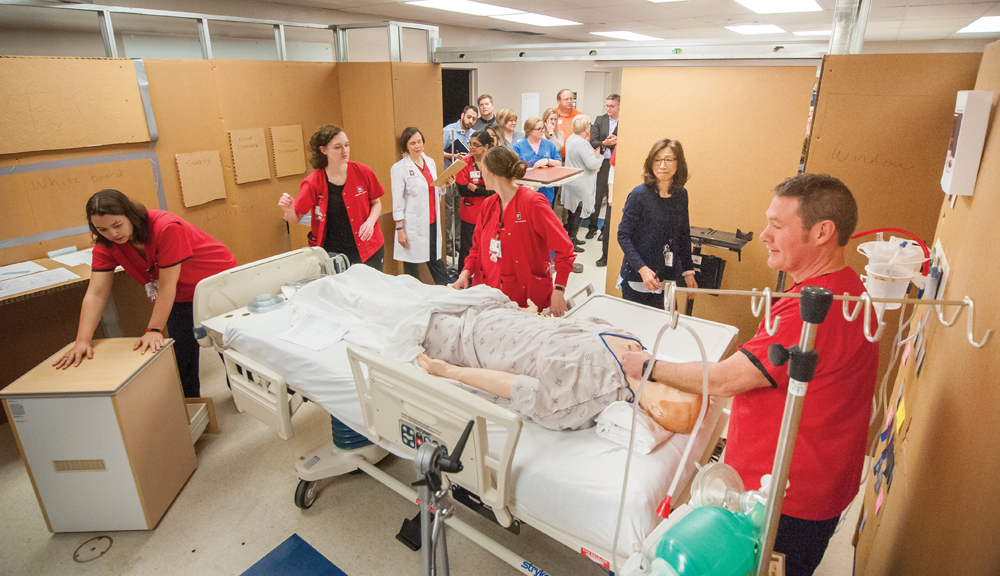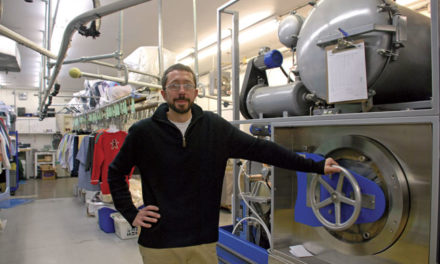
One of the cardboard mock-ups being used by IU Health Bloomington Hospital staff to determine the best way to deliver services to patients in the hospital’s new east-side facility, set to open in 2020. Photo by Rodney Margison
BY JANET MANDELSTAM
Although the new IU Health Bloomington Hospital on the city’s east side won’t be complete until 2020, doctors, nurses, and other staff have already begun considering how they will best deliver services to future patients.
To that end, cardboard mockups of emergency, surgical, delivery, and patient rooms have been created. Staff are now participating in clinical scenarios to see how well the size and layout of the rooms work.
“We wanted to engage caregivers in rooms that look like those in the new hospital,” says Michele Ridge, director of nursing operations. For example, the mockup of an in-patient room includes a bed, a table for reports, a sink and hand sanitizer by the door, and a space on a cardboard wall for a window.
“The hospital is being built for the patient, with the staff in mind.” Ridge says. “We want to bring as many tests as possible to the patient rather than send the patient around the hospital.” In order to evaluate how well the space works, equipment for various procedures is brought into the cardboard room. Staff run through scenarios such as treating an accident victim or caring for a patient who is recovering from open-heart surgery.
The team debriefs after each scenario. “We talk about what we learned and what adjustments we need to make to that room,” Ridge says. For the in-patient room, the cardboard flap representing a table was shifted after it impeded the movement of equipment near the bed. On the other hand, Ridge says, doctors liked the placement of a sink near the door and a chair next to the bed.
“All hospital staff come to the space to tell us what they like or don’t like,” Ridge says. A patient-family advisory council is also providing input. Many scenarios are run with a dummy patient. “But we put some of us in the bed so we could see things from the patient’s perspective,” Ridge says.
Ground was broken for the new facility—officially known as IU Health Regional Academic Health Center—on the Indiana University campus in January. The complex will include an academic building housing the university’s medicine, nursing, social work, and speech and hearing programs.
“We think we got it right architecturally,” Ridge says. “Now we have to make sure it works.”






